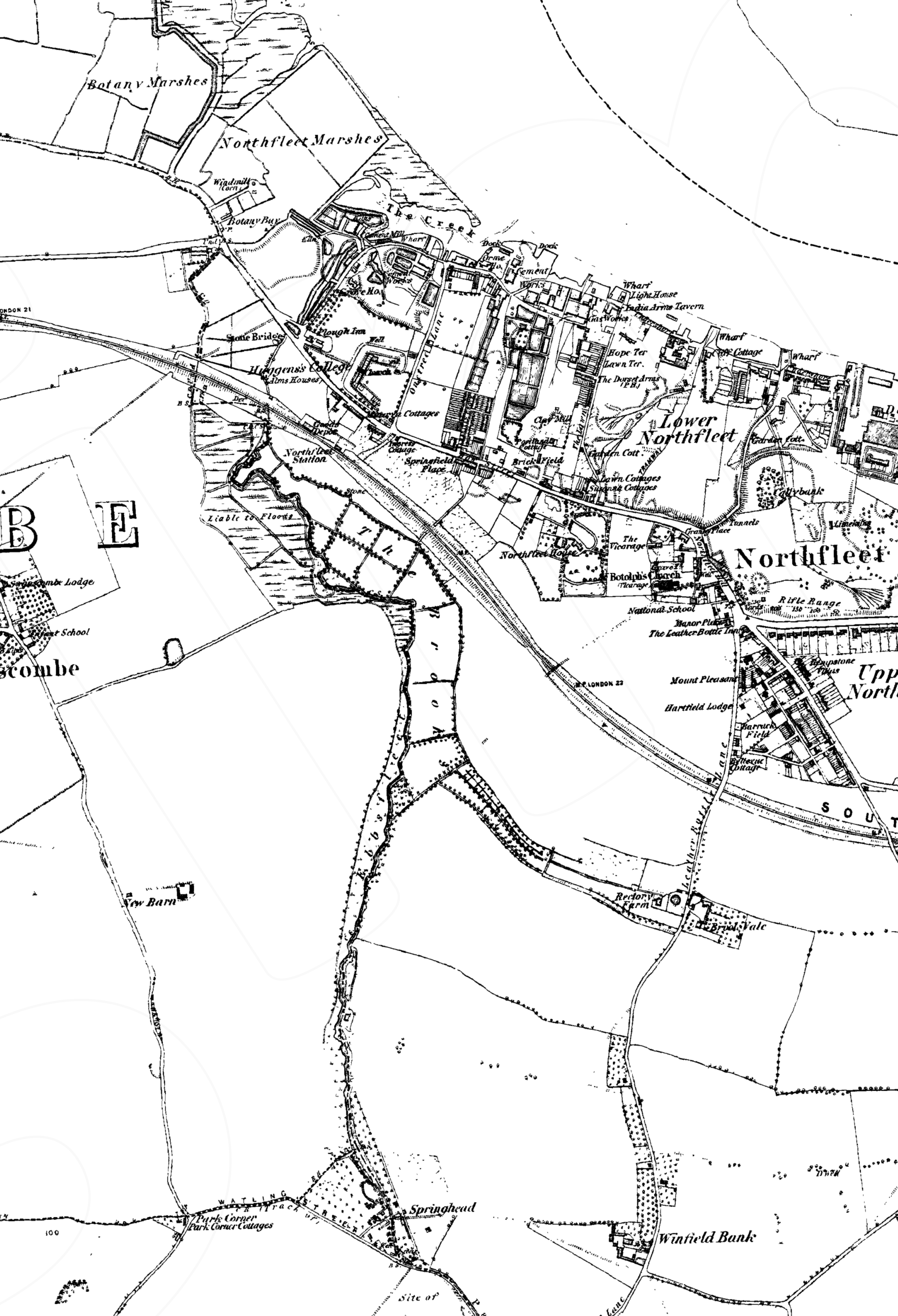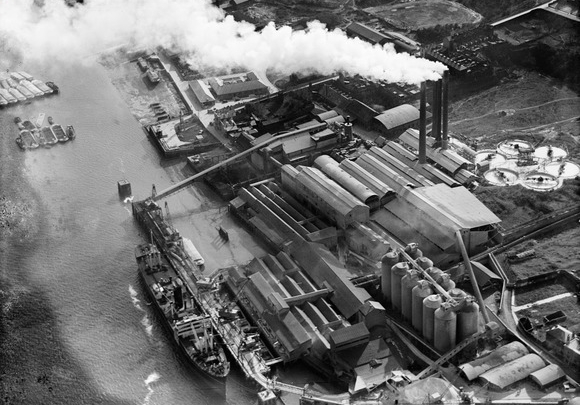
Learning from the river & industry:
Northfleet trade & industry
Wharves, Warehouses & Kilns
The River Thames developed historically as a major communications corridor. In Roman times, Northfleet was the trading connection on the Thames and the Fleet river was used to connect Watling Street to the Thames.
In 1796 when James Parker set up kilns along Northfleet creek to make his ‘Roman’ cement, it marked the beginning of the large cement works industry which developed along this stretch of the river.
1860 map of Ebbsfleet river
© Crown copyright and Landmark Information Group Limited 2018. All rights reserved.
The Bevan Portland Cement Works, Northfleet, 1939 - Britain From Above
The Creek Northfleet - saw tooth roof forms, warehouses and chimneys
Dockyards, Wharves, Kilns, Brick Fields and ‘Chalk Hills’
© Crown copyright and Landmark Information Group Limited 2018. All rights reserved.
The map of 1860 (above) shows a hive of industry: cement works, wharfs, a brick field and ship building slips at the dockyard.
‘... we comes to Gravesend, the whole shore being low, and spread with marshes and unhealthy grounds, except with small intervals, where the land bends onwards as at Erith, Greenwich, North-Fleet, etc in which places the chalk hills come close to the river, and from thence to the city of London, and adjacent countries, and even Holland and Flanders, are supplied with lime, for their building, or chalk to make lime, and for other uses...’ Daniel Defoe A Tour Through the Whole Island of Great Britain - 1724-6
The drama and industry of the ‘chalk hills’ defined the character of Northfleet as early as the Eighteenth Century. Similarly it is interesting to note the strong trading links with the low countries through the manufacturing of lime.
Lime kilns at Northfleet
Northfleet Dockyard
Launch of the Orinoco, West India Mail Steamer at Northfleet Dockyard, Kent, England, UK, 1851 Engraving
Bottle kiln - oldest cement kiln in world









